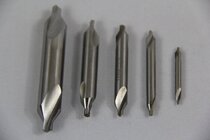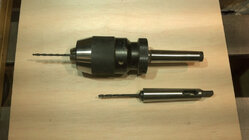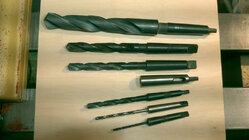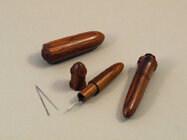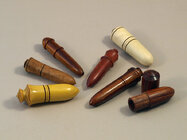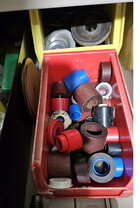This weekend I'll be installing a fresh set of Norton 6" aluminum oxide grinding wheels on my 25-year-old Milwaukee 3600rpm bench grinder.
Expecting the best but planning for the worst with the factory plastic bushings, has anyone ever made wood wheel bushings? Any words of wisdom for doing so? Thanks.
Expecting the best but planning for the worst with the factory plastic bushings, has anyone ever made wood wheel bushings? Any words of wisdom for doing so? Thanks.

